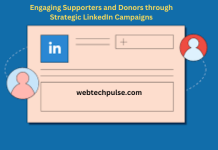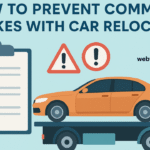We talk about inbound marketing to refer to the digital marketing methodology that aims to attract users in a non-intrusive way by providing the right value at the right time.
And how can we create a good strategy? In this article we will see what are the steps to follow to be able to trace 10 attraction strategies in inbound marketing that we can carry out to have more conversions from users to customers . Let’s start!
Steps of an attraction strategy in inbound marketing
There are several steps to create a good attraction strategy in inbound marketing . But, in addition, we can group them into 3 major phases: the research phase, the acquisition phase and the measurement phase. Let’s see it.
1) Research and prior preparation
- Analysis of the environment . Before defining where we are going, it is first essential to understand where we are. In this part we must analyze the online presence of our brand (channels we have now or trends or news) and the competition.
- Definition of the objectives . Simple but necessary. They always have to serve the overall objectives of the company in order to work in the same direction. Remember! They have to be quantifiable and measurable.
- Definition of the Buyer Persona . It is essential to be clear about the profile of our ideal client to know what needs they have so that we can cover with inbound marketing strategies.
- Definition of the Buyer Journey . Between the user’s first contact with us and the final conversion, there is a long road where relevance and consistency are essential. And it is not the same to generate content for users who make a first approach with others who are evaluating whether to hire us. But one thing is clear: there must be content for each of the stages of the conversion funnel !
- Definition of the team . Although it may seem obvious, defining human resources is essential for the proper functioning of any inbound marketing strategy. In this way we ensure that everything we mark has a responsible person who will report the operation of our actions.
2) Recruitment and loyalty
- Keywords . The keyword research is essential to understand how we wanted and what we need to enhance or contents are yet to be filled. A subsequent step to this would be to come up with a well-defined SEO strategy.
- Contents plan . As we always say, inbound marketing content is king. At this point we must be very clear about what type of content we are going to produce, how it fits into each phase of the funnel, how often we are going to publish it, what formats we are going to use and how we are going to spread it.
- Lead acquisition . In this step we will determine how we will catch users.
3) Analysis
- Measurement plan . And, as always, it’s time to measure, measure and measure. It is useless to draw up a good inbound marketing attraction strategy if we do not later evaluate its operation. So now it’s time to decide what metrics we are going to use to analyze our actions and what criteria we will use.
10 attraction strategies in inbound marketing
As we have seen, inbound marketing is based purely on attraction. For you to see examples, we have compiled 10 attraction strategies in inbound marketing so that you can become a lead capture machine.
1) Work your blog and content strategy
The blog is not just a channel in our content strategy . It is one of the main, or even the most important. And is that having a blog is one of the best bases of any inbound strategy to attract traffic and leads. Make sure your content is quality and that you post regularly.
2) Customize, customize and personalize
The conversion funnel must always be present in any inbound marketing attraction strategy. The personalization of the content always has to revolve around the three phases of the funnel:
- Top of the funnel (TOFU) : In the first phase of the funnel, the user has detected that he has a need and starts looking for information to respond to it. And we have to be there!
- Middle of the funnel (MOFU) : In this second phase, the user is evaluating the different options that are on the market. Make sure you have more specialized content available that aims to make the user leave their data. This way you can become a lead.
- Bottom of the funnel (BOFU) : In the last phase of the funnel the user, of all the options he has valued, is still interested in you. Once you have completed the conversion and have become a consumer, it is time to build loyalty.
3) Use lead magnets
The magnets lead are techniques and elements that allow you to attract users of organic and non – intrusive manner. They have the main objective of adding value, and for this, as in any inbound marketing attraction strategy, the Buyer Persona and the customer journey are the main focus.
There are many types of lead magnets. A classic example could be putting an infographic at the beginning of your post, so that they are “hooked” on the design and consume the information in the article in a faster and more visual way. CTAs are also clear examples of lead magnets. We will look at them in more detail below.
4) Includes CTAs
The to call action are elements that we serve to draw the attention of visitors. We often think that putting CTAs here and there is enough, but the truth is that if we develop a good attraction strategy, they will give us much better results.
When working with calls to action you have to take into account the following:
- They have to be seen as content. If not, they can be perceived as a hindrance in navigation.
- A good design will be crucial for its effectiveness.
- Defining its function and phase within the conversion funnel is essential.
5) Check your landing pages and forms
The landing pages and forms are the tools that will help us make the qualitative traffic leads. Anonymous visitors become people about whom we have information.
With landing pages , it is not only enough to define what type of content we want to offer and in what format, but also to create a good design, because that same will have a very important role in the conversion data.
Here are some keys to generate a good landing page:
- It is better if the product has a better conversion ratio.
- It is better if the form appears on the user’s screen without the user having to scroll.
As for the form , analyze very well what you are going to ask. The answers should help you define whether that person is a qualified marketing lead (MQL) or not. Including many questions in a form can lower the conversion rate, that is why you can use progressive forms, that is, that every time the contacts come back to you, new questions appear. Certainly there are very long forms, these can be used when the valuable content you offer is equivalent to what you ask.
6) Workflows, email marketing and lead nurturing
If we want to work with inbound marketing attraction strategies, email marketing is a piece that we cannot forget. And is that today is still key to lead nurturing.
Working the workflows properly will allow us to work and nurture the leads to accompany them in the different stages of the conversion funnel.
7) SEO works
SEO has many advantages for inbound marketing . Through SEO techniques, we manage to attract visitors to our website, so working on it will help us start our inbound marketing processes and convert visitors into leads and customers.
8) Link building
The link building is a strategy that focuses its efforts on finding quality inbound links to our site from other domains. To be effective, the following parameters must be taken into account:
- Diversity : try that not all links come from the same domain.
- Quality : the links have to be worth it. Look for links from platforms or media related to your sector, this Google knows how to detect and value. For example, if you are a digital sports store, links that point to you from sports media will have more value than from web pages related to digital marketing.
- Quantity : it is good to have many links that point to your site from different domains, so you imply that you are relevant, but remember that Google values quality more than quantity.
9) Work your social networks
Nor can we forget about social networks if we want to make inbound marketing attraction strategies. Aside from having a content dissemination function, they can also help you with the capture of leads, branding and brand awareness. Links from social networks, although they are dofollow, are also taken into account by Google at the SEO level. So keep your social networks animated with a lot of content.
10) Work your paid-media
If you combine the paid and the organic part wisely, you will be able to extract much more potential from your inbound marketing attraction strategies. For example, the same keyword study can help us for our SEM campaign, aimed at making PPC ads and obtaining short-term results, and for SEO, a medium-long term strategy, but with very good results when it starts pull. In addition, paid campaigns, promoting our inbound content, can help us capture new contacts who did not yet know us, so that they enter your database and you can work with them towards conversion.











